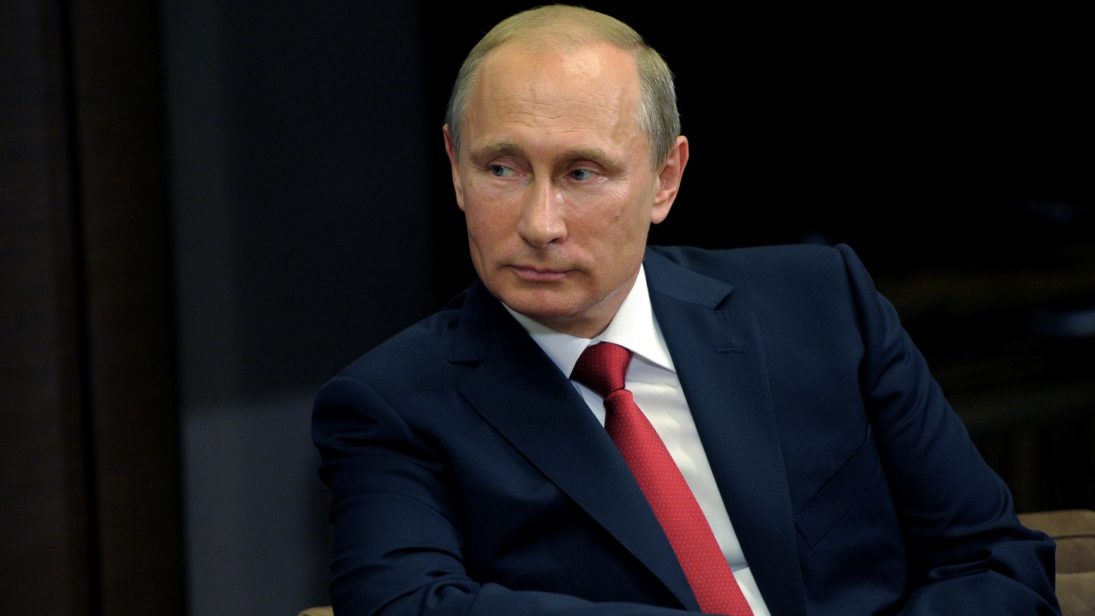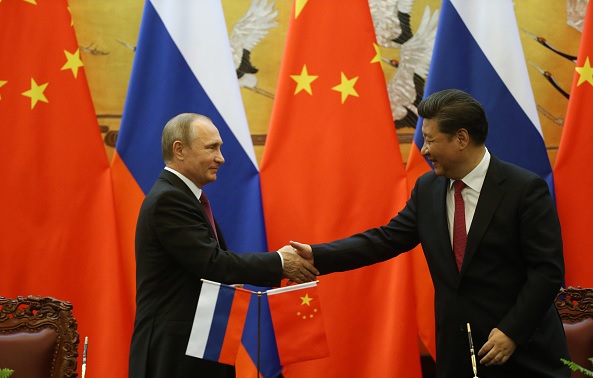
Last month, Moscow hosted a meeting on peace and stability in Afghanistan with representatives from China, Afghanistan, India, Iran, and Pakistan. This is the second meeting hosted by Moscow in the span of less than two months in an attempt to restart the peace process between the Afghan government and the Taliban. Interestingly, the United States was not a part of either of these consultations. Russia’s role in orchestrating these meetings, which addressed an issue that impacts regional security in South Asia, reflects Russia’s increasing pivot to Asia as well as an attempt to fill the role vacated by the United States. As the situation in Europe turns uncertain every day, due to the economic divide in the European Union and the refugee influx from the Syrian crisis, Russia has shifted focus to South Asia. However, any policy adopted by Russia regarding South Asia will have to be formulated in consonance with the role of China and the United States in this region. In other words, the proverbial Russian eagle may be turning its eye towards South Asia but it shall not soar freely. Its direction will be determined by winds coming from both China and the United States.
Russia’s foreign policy interests in South Asia have revolved around three important aspects: 1) energy routes passing through this region, 2) its security apprehensions related to terrorism, particularly in Afghanistan, and 3) access to the Arabian Sea and the oil-rich Middle East. After the humbling experience of the Russian invasion of Afghanistan (1979-89), Moscow’s involvement in this part of Asia reduced considerably. A pronounced role of the United States in the region and Russia’s faltering economy led to its pulling back, though close diplomatic and defense ties with India played a role in ensuring Moscow’s relevance in the region. But the signing of the civil nuclear deal between India and United States and an increasing Indian inclination towards America thereafter has impacted Russia’s outlook towards this region.
However, in 2010, Russia emphasized that a pivot to Asia is an extremely important aspect of its foreign policy. As the global pendulum of economy and geopolitics swings towards Asia, Russia has also realized the importance of carefully articulating a policy towards Asia in general and South Asia in particular. If the Russian dream of ‘Greater Eurasia’ is ever to be realized, its only chance is to be strengthened from the East rather than the West. Additionally, the case for building a well-rounded Russian policy towards South Asia is not a matter of choice anymore. Russian hopes for economic forays into Europe are diminishing due to the uncertainty of the European Union and its economic integrity. At home, there is talk about overcoming the economic recession but the Russian economy is not out of the woods yet. There is an immediate need for structural reforms in the economic system that should be framed around an austerity-based policy. Additionally, the military spending in the Syrian intervention has impacted Russian resources.

The most important alliance to be reinforced and prolonged is Russia’s alliance with China. China’s position has grown stronger economically as well as strategically in Asia while it also sees Russia as a potential partner against U.S. hegemony. The timing is right for a nexus of sorts of which Russia can be an integral part. The Russian economy may be weak but its political acumen is what China can benefit the most from.
Russia’s interest in South Asia can also be framed with respect to its current international standing and the declining importance of the United States in global politics. One of the core features of Russian foreign policy is an aspiration to create a multipolar world where the unilateral supremacy of any individual country such as the United States will not be tolerated. This vision combined with the historic Russian dream of being recognized as a great power or derzhavnost explains its renewed interest in the subcontinent. While it still might be too soon to state that the world has become multipolar, less and less U.S. involvement in world affairs due to the increasing role of competing powers such as China and Russia and domestic political challenges have shifted the spotlight away from America. The two most relevant examples are the roles being played by Russia, China, Iran and other regional countries in Afghanistan and Syria. Apart from eclipsing the role of the United States, these developments have provided Russia with the political breakthroughs that it needed to stay relevant in global politics.
There is no doubt that the proximity of interests that Russia and China enjoy for the moment will last, but there may be potential areas of conflict such as China’s increasing interest in Central Asia and Russia’s weapon sales to India. The election of President Trump and his stance on fostering better relations with Russia may also change the dynamics China-Russia relations and the region as well. To guard against geopolitical shocks, Russia would be wise to adopt a balanced, well-rounded regional approach. This would mean maintaining an equilibrium in ties with China and the United States, as well its relations with India and Pakistan. A balanced approach in South Asia while strengthening its economy at home would be the optimum strategy for Russia.
Editor’s note: In recent times, Russia has reached out to the Afghan Taliban, conducted its first ever military exercise with Pakistan, and drifted away from its traditional partner in the region, India. Our four-part series examines the significance of these events and whether they constitute a shift in Russia’s South Asia policy. This is part 4. Read the entire series here.
***
Image 1: The Kremlin (cropped)
Image 2: Getty Images, Mikhail Svetlov


